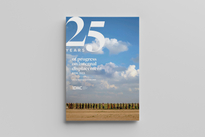25 years of progress on internal displacement 1998-2023

Chapter I: Policy and legal frameworks on internal displacement


Chapter II: Protection and assistance


Chapter III: Durable solutions


Chapter IV: Preparedness and prevention


Chapter V: Data on internal displacement


The Internal Displacement Index (IDI) 2023

